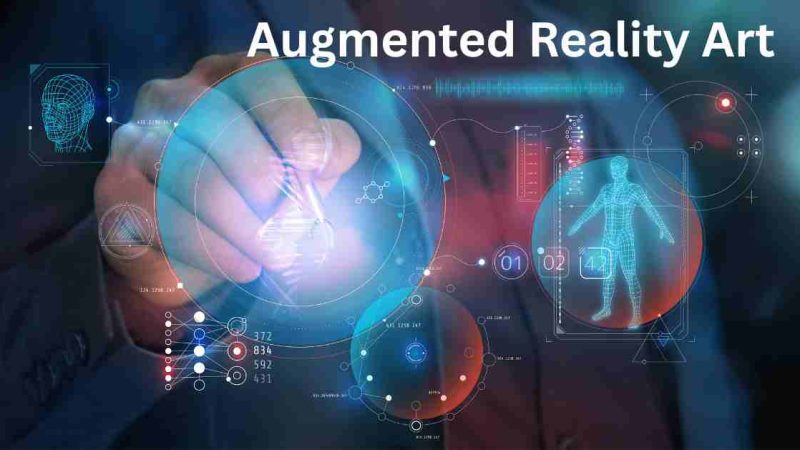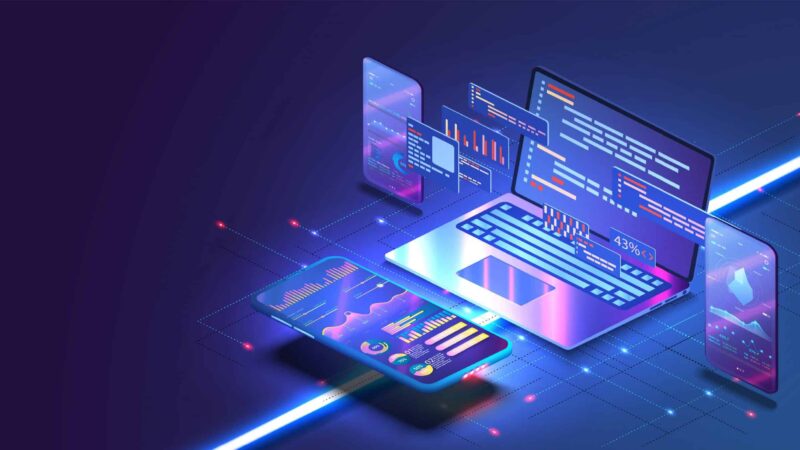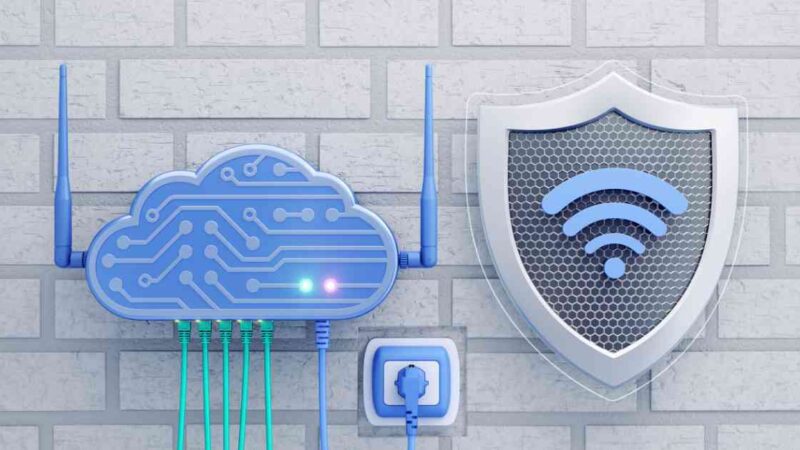What is Edge Computing?

Edge computing is changing the way billions of devices generate, store, process, analyze and transmit data. Before we dive into what edge computing means let’s first clarify the concept of “edge” in the context of “edge computing.” In this case “edge” refers to the geographical distribution aspect.
What is Edge Computing?
Edge computing refers to the practice of performing computing tasks at the edges of company networks. “The edge” refers to the point where devices, like phones, laptops, industrial robots and sensors connect to the network. In terms of edge computing involves bringing power closer to where the data is generated which helps reduce the distance between clients and servers. This decrease in latency and bandwidth usage is achieved by providing computing resources as possible to where the data originates. It allows companies to effectively use a shared pool of resources, across locations.
[Also Read: The Salesforce Implementation Process: 10 Things You Must Know]
Why is Edge Computing Critical?
Initially, the edge served as a hub for devices to connect and exchange data as well as download software updates, from either the cloud or a centralized data center. However, this model has proven to be flawed due to the increasing number of devices. The sheer amount of data generated by these devices requires expensive connections to data centers and the cloud.
Let’s consider a situation in a petroleum refinery where sensors in valves detect pressure in the pipes, which necessitates immediate activation of shutoff mechanisms. Depending on processing centers for pressure data analysis could result in delayed instructions for shutoffs. On the other hand by utilizing edge computing, where processing power is placed closer, to the end device latency is. Roundtrip time is significantly shortened. This not help prevent downtime and property damage. Also has the potential to save lives.
Real-life applications of edge computing
Some of the famous real-life applications of edge computing are:
Autonomous Vehicles
Picture a line of trucks traveling closely together saving fuel and reducing traffic congestion. By employing edge computing it becomes possible to remove the need, for drivers in all trucks except the one. This can be accomplished because the trucks can communicate effortlessly with one another thanks, to the fast response time made possible by edge computing.
Oil and gas industry remote asset monitoring
Oil and gas facilities are commonly located in regions. Edge computing enables the analysis of data, in time by positioning the processing to the equipment reducing the reliance, on strong connectivity to a centralized cloud.
Cloud gaming
Cloud gaming, a type of gaming that delivers a game feed directly to devices is very dependent, on fast response times. To reduce delays and provide players with a highly interactive gaming experience edge servers are strategically positioned as close to the players, as possible.
Traffic management
Edge computing provides a solution for cities to improve traffic management by eliminating the need to transfer amounts of traffic data to a cloud. This not only helps reduce costs associated with also decreases latency resulting in faster response times.
Virtualized radio networks (vRAN) and 5G
Mobile network providers are increasingly looking into virtualizing parts of their networks especially focusing on virtualized Radio Access Networks (vRAN). This strategy brings about benefits in terms of cost and flexibility. The virtualized RAN hardware should have the ability to handle processing tasks with minimal delays. To enable this operators will need to place edge servers near cell towers to support the virtualization of their RAN.
Advantages of Ege Computing
Some of the advantages of edge computing are:
Minimize Latency: Considering the consequences of downtime or delays companies have the opportunity to utilize edge computing to reduce latency and improve network speed.
Decrease Response Time: By processing data to the source of information it significantly shortens the distance it has to travel leading to a decrease, in response time.
Enhanced Security: Unlike the data kept in the cloud which could be vulnerable, to hacking, edge computing addresses this concern by sending data to the cloud. Furthermore, edge computing doesn’t solely depend on a network connection ensuring that user data remains protected even if there are issues, with accessing the cloud.
Cost Reduction: Edge computing offers cost savings by reducing the need, for bandwidth. By enabling localized processing and storage on servers and devices a significant amount of data no longer needs to travel to data centers. As a result edge computing reduces the demand for bandwidth, within these data centers.
Disadvantages of Edge Computing
Some of the disadvantages of edge computing are:
Costs: While cloud storage is often considered cost effective there are expenses involved at the local level. These mainly arise from the requirement to establish storage capacity, for edge devices. Edge computing also brings cost considerations as the outdated IT network infrastructure needs upgrading or replacement to support edge devices and storage.
Data Integrity: Proper planning and programming are crucial when implementing edge computing to avoid data loss. While many edge computing devices automatically discard data it is important to ensure that relevant data is not mistakenly discarded. Otherwise, it can lead to data loss. Compromise the accuracy of cloud-based analysis.
Security Concerns: If a company invests in a cloud-based provider that has security measures it won’t be effective if their local network is vulnerable. Even though cloud-based security has improved a substantial number of breaches still happen due, to mistakes in the use of applications and compromised passwords.
[Also Read: Top 10 iOS App Development Companies in New Jersey]
Why is Edge Computing the Future?
The potential, for the advancement of edge computing in the future is closely linked to the development of networks, like 5G, satellite mesh and artificial intelligence. As these networks continue to expand in capacity and capability providing more connectivity and with the integration of intelligent machines driven by AI into computers we enter a world filled with exciting possibilities;
1. Accelerated Connectivity: Edge computing improves the significance and practicality of data leading to a response time. In situations such, as vehicles, where split-second choices are crucial and in industrial environments where the detection of human presence helps prevent, on-site accidents faster connections play a vital role.
2. Extended Reach: Unlike Cloud Computing, which depends on internet access Edge Computing can process data locally without the need, for an internet connection. This allows computing capabilities to be extended to previously unreachable areas.
3. Enhanced Healthcare: Advancements, in the field of technology driven by the integration of edge computing and advanced artificial intelligence have made it possible for devices to instantly detect and respond to signals from the body. These developments have paved the way for possibilities like emergency calls that can be made before a heart attack occurs, continuous monitoring and response to vital signs, as well, as non-invasive monitoring of cancer cells.
4. Climate Improvement: Edge computing offers an approach, to conserving resources and combating climate change. By relying on cloud systems with sensors covering a 1,000-acre farm edge computing systems can independently make decisions to optimize ground moisture by utilizing the available water resources.
In conclusion, edge computing is seen as the stage, in computing bringing numerous advantages across different industries and opening doors for innovative and impactful advancements.
Do Edge Devices Require Connection to Data Centers, Whether On-Premises or in the Cloud?
Indeed with the emergence of edge computing and storage devices, it remains crucial to establish a connection, between these devices and data centers or the cloud. Let’s consider the industry as an example. There are sensors in fields that gather data on temperature and humidity. However, this data doesn’t necessarily require real-time analysis or storage. Edge devices can efficiently collect organize and analyze this data before sending it to its destination—whether it’s applications or long-term storage either on-site or in the cloud.
Since this data transfer is often not time-sensitive but cost-effective slower connections (such as those through the internet) can be sufficient. Moreover, because the data is pre-sorted at the edge it can potentially reduce the volume of transmitted traffic. The advantage of edge computing lies in its ability to offer response times for applications that require speed while also reducing reliance on expensive long-distance connections, to processing and storage centers.
[Also Read: The Advantages of Intercultural Communication in a Globalized Market]
Conclusion
The main distinction, between cloud computing and edge computing is where the data processing occurs. In cloud computing data is collected, processed and analyzed at a location. On the other hand edge computing operates within a distributed computing environment handling data collection, processing and analysis. It’s worth noting that when it comes to using cloud solutions there’s no need to choose between cloud computing and edge computing because they aren’t in competition, with each other; instead, they work together to improve application performance.
FAQs
Brian Noble, a computer scientist, demonstrated how mobile technology could use edge computing for speech recognition in 1997. This was the first time when the term edge computing came to light.
Cost, data loss, and security are some edge computing challenges.
Edge computing employs the ERBS Time Synchronization Algorithm.
Edge computing is not secure because it lacks the physical security safeguards found in data centers.
Edge computing improves the performance of Internet devices and web applications by pulling computing closer to the data source, thus reducing the need for long-distance communications between client and server and lowering latency and bandwidth consumption.
Yes.






